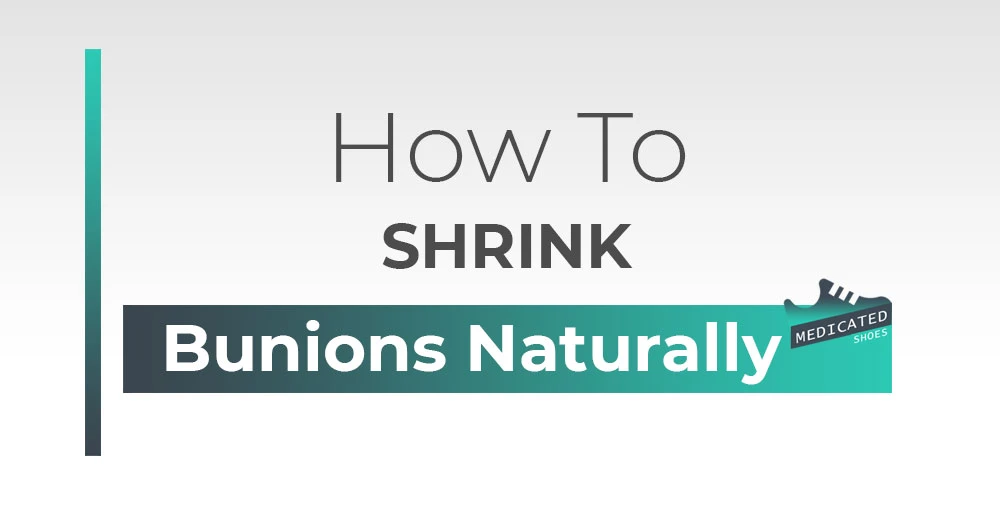Do you have a bunion that’s causing you pain and discomfort? If so, you’re not alone. Bunions are a common foot issue that can make it hard to walk or wear certain types of shoes. But don’t worry there are many ways available to shrink your bunion naturally without resorting to surgery.
In this blog post, we’ll explore some of the most effective natural remedies for shrinking bunions and reducing the pain and discomfort they can cause. By following these tips, you can say goodbye to bunion pain and hello to happy feet!
How to Shrink Bunions Naturally?
While bunions can be treated with surgery many people prefer to try to shrink bunions naturally before resorting to more invasive treatments. We’ll explore some of the most effective natural remedies for shrinking bunions and reducing the pain and discomfort they can cause.
Wear the right shoes
One of the most important things you can do to shrink bunions naturally is to wear shoes that fit properly and offer enough room for your toes. Tight narrow shoes can put pressure on the big toe and exacerbate bunion symptoms while shoes with a wide toe box can help to reduce pressure and allow your toes to spread out.
Look for shoes with a wide stable heel as well as plenty of cushioning to help absorb shock and reduce the impact on the feet. Avoid high heels as they can put unnecessary strain on the forefoot and increase the risk of bunions.
Use bunion pads and splints
Bunion pads and splints can help to reduce pressure on the big toe and alleviate pain caused by bunions. Bunion pads are small adhesive cushions that can be placed over the bunion to protect it and reduce friction while splints are typically worn at night and help to gently realign the big toe. Both bunion pads and splints can be found at most drugstores and are relatively inexpensive.
Apply ice to the bunion
Applying ice to the bunion can help to reduce swelling and inflammation as well as numb the area and provide some pain relief. To use ice as a natural bunion treatment, wrap a few ice cubes in a thin cloth or use a bag of frozen peas, and apply to the bunion for 10-15 minutes at a time several times a day. Be sure to wrap the ice in a cloth to prevent frostbite.
Soak your feet
Soaking your feet in warm water can help to reduce swelling and soften the skin around the bunion making it easier to stretch and massage the area. To make a soothing foot soak add a cup of Epsom salt to a tub of warm water and soak your feet for 20-30 minutes. You can also add a few drops of essential oils such as peppermint or eucalyptus, for an extra relaxing effect.
Massage the bunion
Massaging the bunion can help to improve circulation and reduce pain and inflammation. To massage the bunion, start by gently rubbing the area in a circular motion with your fingers. You can also use a bunion massager which is a small tool designed specifically for massaging bunions. Be sure to use gentle pressure and stop if the massage becomes painful.
Stretch your toes
Stretching your toes can help to improve flexibility and reduce the pressure on the big toe. To stretch your toes, sitting in a comfortable position place a rubber band around your big toe and the toe next to it.
Gently pull the toes away from each other until you feel a stretch and hold for 15-30 seconds. Repeat the stretch a few times and be sure to stop if you feel any pain. You can also try using your hands to gently stretch your toes by pulling them towards your body.
Use bunion correctors
Bunion correctors are small devices that are worn on the foot to help realign the big toe and reduce pressure on the bunion. They can be worn during the day or at night and are typically made from soft flexible materials that are comfortable to wear. Bunion correctors can be found at most drugstores or online and are generally inexpensive.
Try physical therapy
Physical therapy can be an effective treatment for bunions as it can help to strengthen the muscles and tendons in the foot as well as improve flexibility and range of motion. Physical therapists can also teach you exercises to do at home to help reduce bunion pain and improve foot function.
Take over-the-counter pain relievers
Over-the-counter pain relievers, such as acetaminophen (Tylenol) or ibuprofen (Advil) can help to reduce pain and inflammation caused by bunions. Follow the instructions on the package and be sure not to exceed the recommended dosage.
If you have a medical condition or are taking any other medications be sure to check with your doctor before taking over-the-counter pain relievers.
Conclusion
There are several natural remedies that may help to shrink bunions and reduce pain and discomfort. It’s important to remember that these natural remedies may not work for everyone, so if your bunions are severe or if you are experiencing significant pain or difficulty walking, it’s always a good idea to speak with a healthcare professional for proper treatment.

